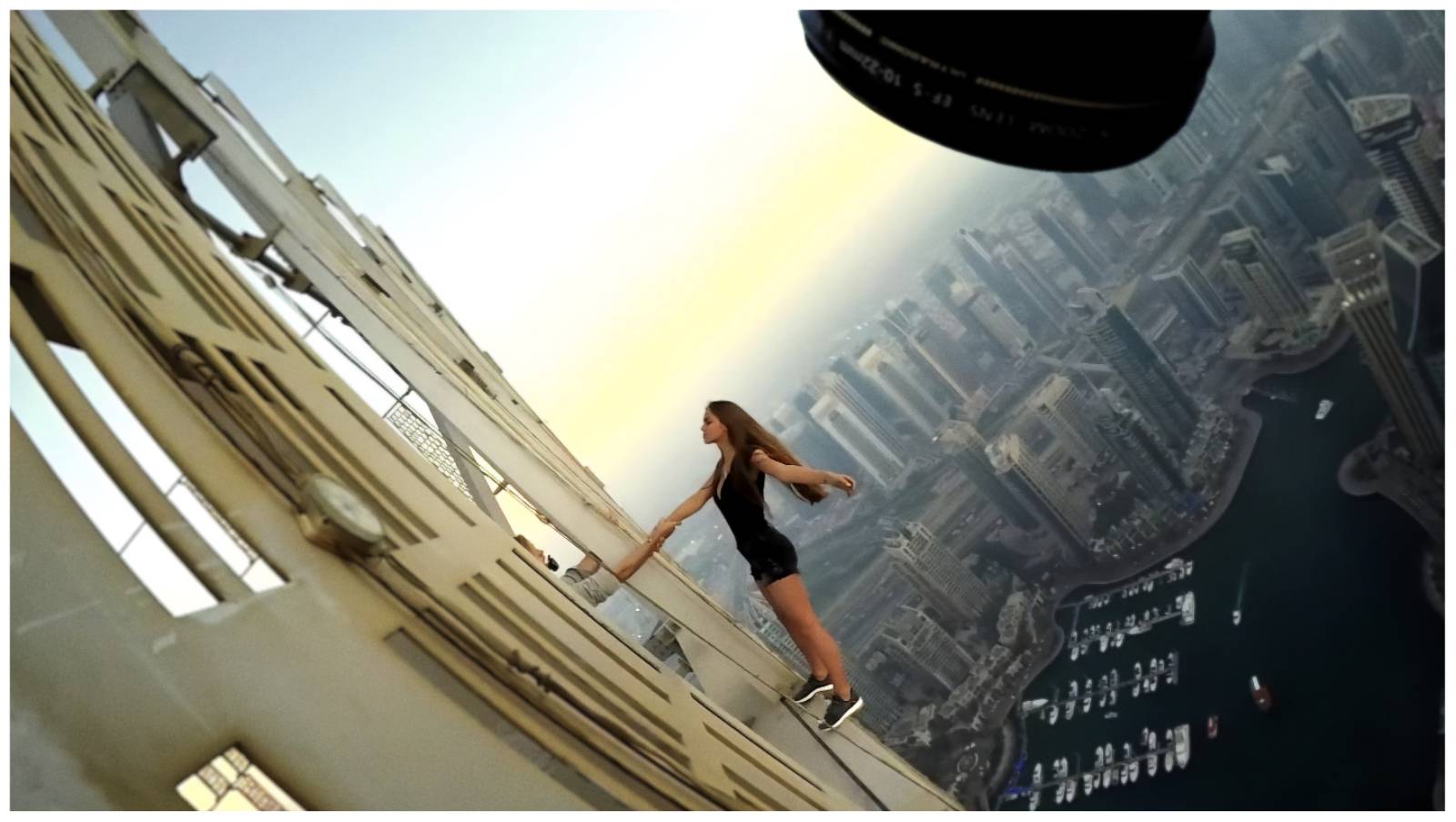The history of film is filled with fascinating symmetries, with Edison’s early kinescopes like Fred Ott’s Sneeze and The Kiss resembling the kinds of stories friends might send you on Snapchat or Instagram. Unfortunately, Axel Danielson and Maximilien Van Aertryck’s Fantastic Machine (also known by its full title: And The King Said, What a Fantastic Machine) doesn’t know quite what to make of them. An essay film on the study of photography–from the early camera obscuras to cell phone videos and police body-cam footage–it has a seemingly limitless canvas to explore all aspects of photography, including its possibilities, shortcomings, and manipulations. Sourced from found footage, the film presents itself as a roadmap to the unknown, and playfully comes up short in its conclusions.
The starting point is early plate photography: Eadweard Muybridge’s 1859 experiment commonly considered the birth of the motion picture. The documentary then quickly crisscrosses over the next 164-or-so years, only periodically stopping to draw correlations between these time periods as new technologies emerge–among them color, cable, satellite, and cellular. One correlation they stop to observe is the ways in which epic filmmaking techniques pioneered by propagandist Leni Riefenstahl and the social-media presence of terror groups (e.g. ISIS) are alike. To combat Riefenstahl’s vision, documentary filmmakers like Peter Tanner take the opposite approach, showing the horror of the concentration camps in a manner as straightforward as possible–long panning takes, minimal cuts. The propaganda of ISIS here is demystified with behind-the-scenes footage as shots and messaging are planned.
Fantastic Machine seems uncertain what to make of the unknown web it weaves, stopping to chronicle the dangers of the medium: a British couple who seem both content and unhappy as they sit in silence watching TV nightly in the 1980s, or Twitch and YouTubers who capture every move of their mundane lives, including sleeping on camera. The medium for them is quite literally the message, as Marshall McLuhan says.
At its core, Fantastic Machine is a free-flowing collage of ideas, among them the early days of TV, the first satellite broadcast “from across the pond,” and the ability to create high-quality images with a smartphone on your vacation. It rushes by too quickly as a lesson in media ethics, despite slowing down to spend time with Riefenstahl, Tanner, and Belle Dalphney, a South African YouTuber known for doing “weird things while being sexy”–that is, monetizing her following on OnlyFans.
The flood of imagery and ideas is hurled forth at frantic speed, Danielson and Van Aertyck making sense of where we are in an era where the power balance and communication models have shifted. In one striking passage they tell the story of a horrifying, award-winning image of a dead girl lying on concrete after the 2010 Haiti earthquake, pulling away to reveal a line of photographers all capturing the same shot.
For those who have been paying attention, Fantastic Machine might offer too little insight into the shifting media landscape. In some ways it has bitten off a little more than it can chew, covering its ground in about 5% of the time a college course would dedicate to media literacy. Somewhat compensating for such limits, the pithy voiceover and juxtapositions can offer a fascinating look into the history of the medium, elevating this material beyond a YouTube explainer. As an essay film, Fantastic Machine requires unpacking. The camera preserves a moment in time; like memory, it is subject to manipulation. Some moments are worthy of preservation; others less so. As a college professor of mine used to say when drafting an essay, “After writing your thesis, ask yourself: ‘So what?'” I’m not sure Fantastic Machine passes that test.
Fantastic Machine premiered at Sundance 2023.

